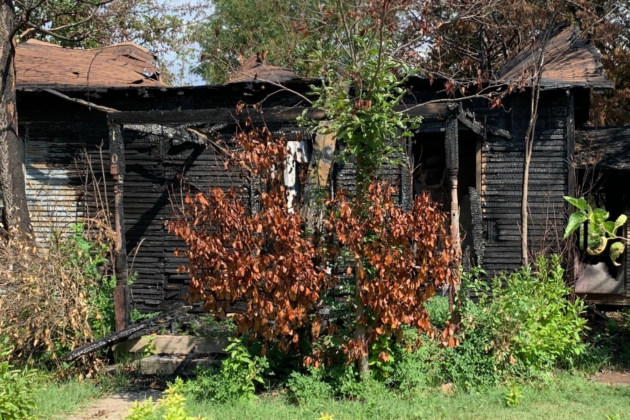600 dangerous properties over 5 years
LAWTON – City Hall has launched a program to eliminate 500 to 700 dilapidated and dangerous (“D&D”) structures in Lawton over the next few years.
“Our immediate goal is to get through 120 of these places in a year,” which would eliminate 600 deteriorated properties over a five-year period, City Manager Michael Cleghorn said. However, the City Council “has asked us to accelerate the program to perhaps 20 to 30 a month.”
“We want to elevate our staff’s sense of urgency about this,” Mayor Stan Booker said. “We don’t want to allow bureaucratic thinking to take over.”
D&Ds “bring down the property values of the entire neighborhood,” Cleghorn said.
Also, “If you don’t respond quickly to these situations,” the property can attract derelicts, drug addicts, and burglars, said Booker.
The city earmarked $3.75 million for D&D from the 2020 Capital Improvements Program that local voters approved on Feb. 11. Because of the magnitude of the program, the city intends to hire a D&D coordinator. “We just finished the job description,” Cleghorn said Monday.
Eight D&D sites were addressed at the Aug. 25 City Council meeting. The structures were in “an obvious state of neglect and disrepair,” Community Services Director Richard Rogalski asserted.
One of those sites, a house at 803 SW Summit Ave. that had burned, was swiftly demolished by the owner.
The city notified the owner that the property was “dilapidated, detrimental to the health, safety or welfare of the general public and the community,” a blight and “a public nuisance.” The notice was posted on Aug. 11; the homeowner, a Lawtonian, had the property leveled and cleared before the end of the month.
Conditions typically identified at D&Ds include:
• “insect and rodent harborage and/or infestation”
• “premises ... not maintained in a clean, safe, secure and sanitary condition”
• windows, skylights, and doorframes “cracked, not weather tight, unable to open, disrepair”
• roof, roof drains, gutters and downspouts “in disrepair”
• interior surfaces “poorly maintained, unclean, unsanitary; decayed wood, peeling paint, cracked or loose plaster”
• exterior walls “have holes, breaks, or other loose or rotting materials”
• foundation walls “not plumb; open cracks and breaks; openings that allow animals to enter”
• exterior property and premises “not free of accumulation of rubbish and garbage”
• “tall grass”
• structure is “so damaged, decayed, dilapidated, structurally unsafe or of such faulty construction or unstable foundation that partial or complete collapse is possible.”
After city staff labels of piece of property as dilapidated and dangerous, the owner is notified and the City Council conducts a public hearing on the matter, at which the owner can challenge the city’s judgment. If the owner doesn’t protest or appeal, the council passes judgment.
The owner of a property branded as dilapidated and dangerous is instructed to obtain a permit to either rehabilitate the property or tear it down and remove the debris “in compliance with the city’s building code requirements.” If the property owner fails to do either, the city is authorized” to “abate the nuisance...”
The city’s Neighborhood Services Division can solicit bids from contractors to “raze and remove” the dilapidated structure and clean the site.
All of the costs borne by the city in abating the nuisance “shall be charged to the owner of the property as a personal obligation and to the real property itself...” If the bill is not paid, a lien is attached to the property.
“We typically do not recover our costs,” Booker said.
Some residential lots may remain vacant after dilapidated structures are razed because developers might be reluctant to invest in construction of a new single-family house in a declining neighborhood.
However, “Our goal is to promote redevelopment,” Booker said. “Renewal may not have to be a single-family house. There are multiple locations where a nice duplex would fit in.”
The goal of the D&D program “is to help with neighborhood renewal,” Cleghorn said. In addition, “We want to get these lots back on the tax rolls.”


